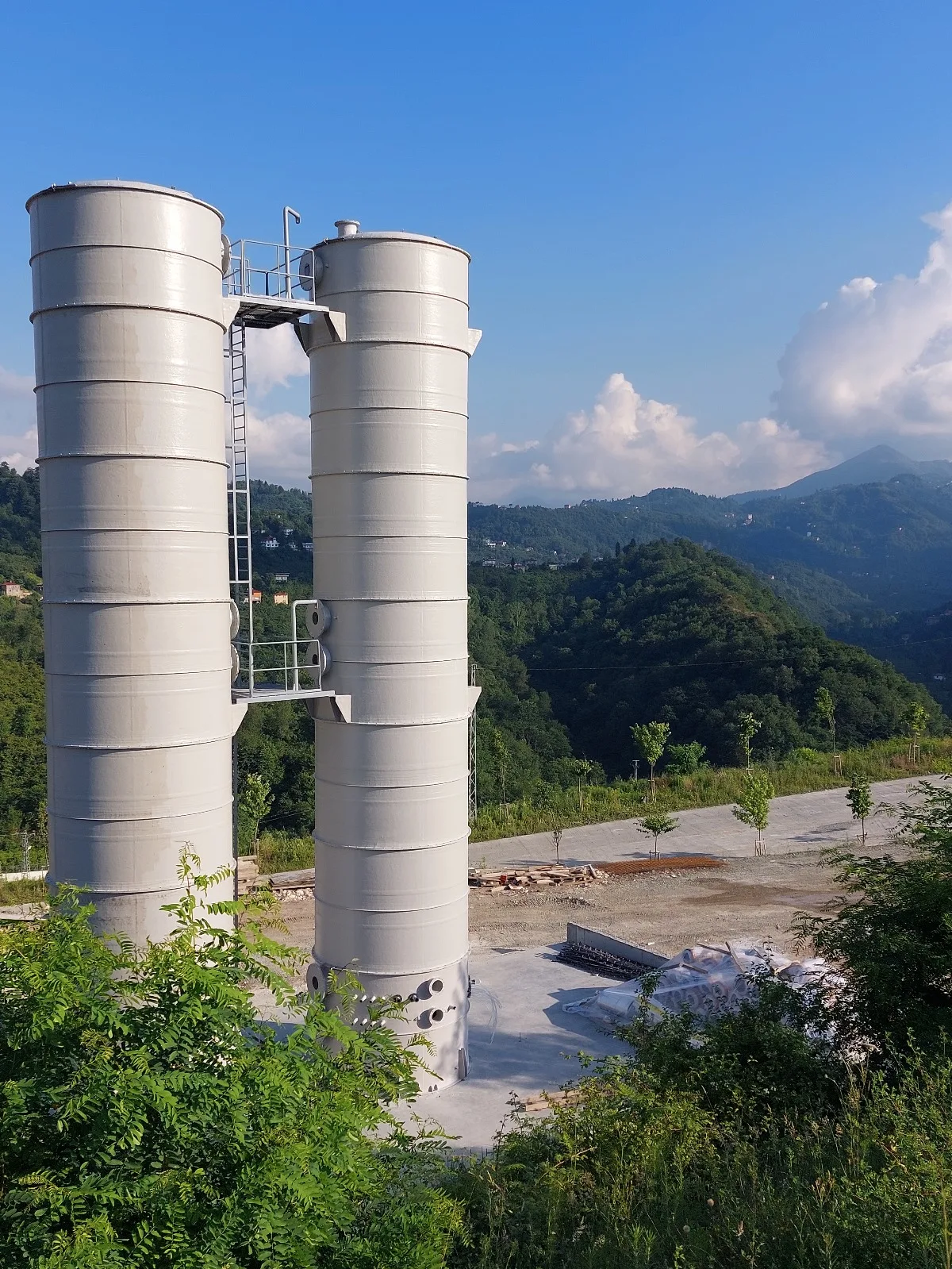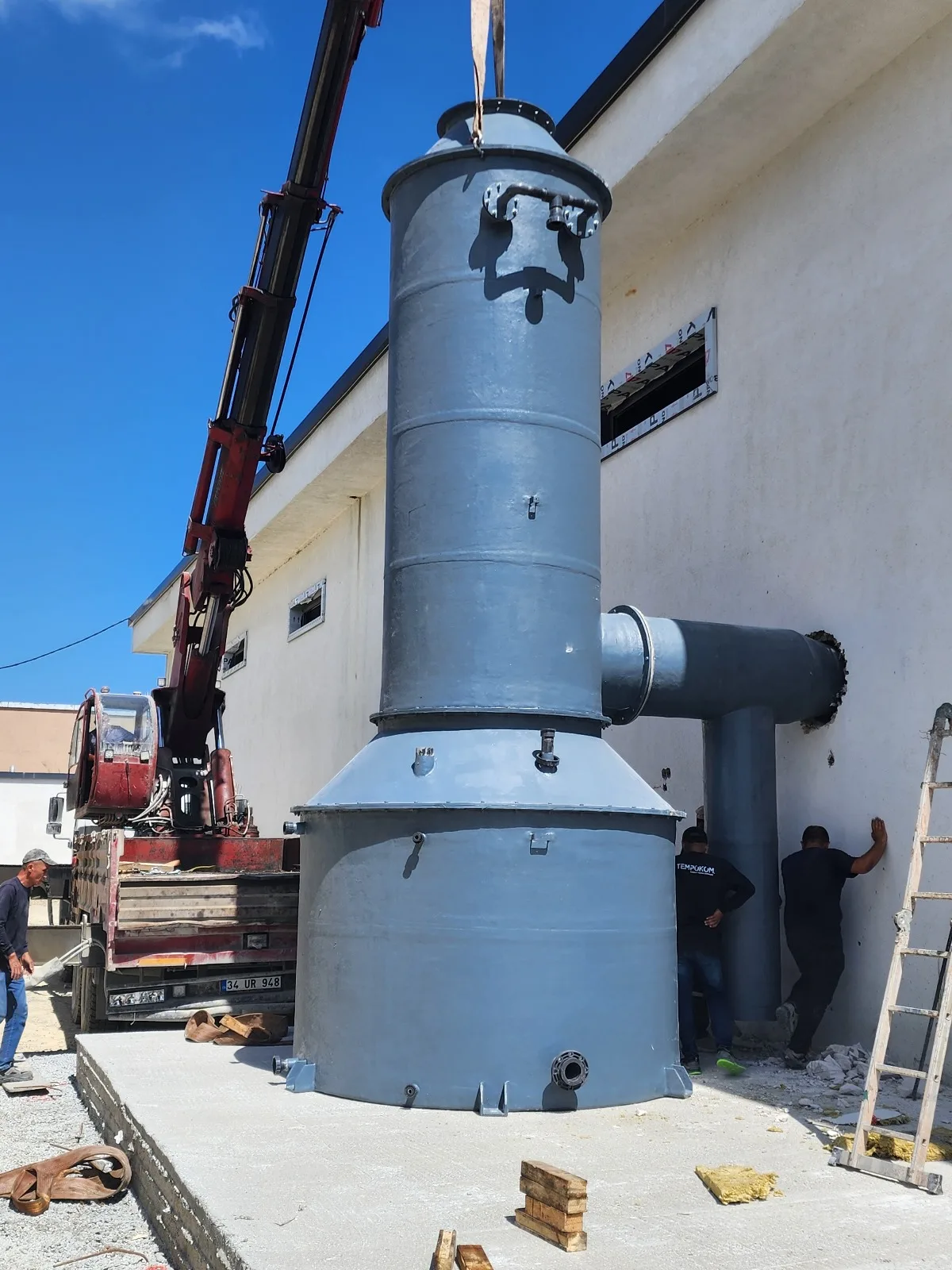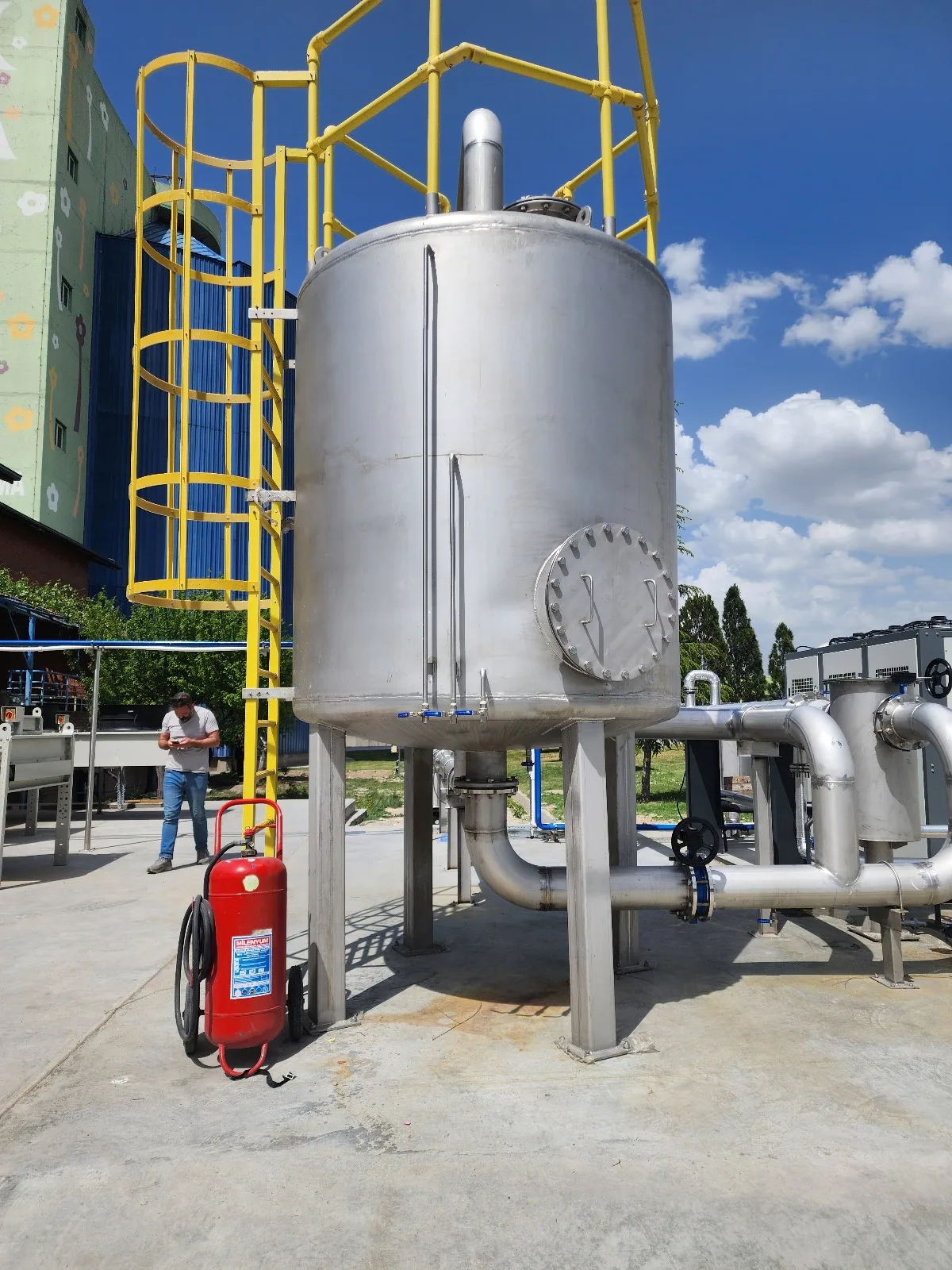Biological Desulfurization Unit
Bio-desulfurization refers to the removal of sulfur-containing components from environmental systems or industrial facilities using microorganisms. This process is typically carried out by reducing or converting sulfur components in water or waste gases through various biological reactions performed by specific types of bacteria. Bio-desulfurization units are commonly used in industrial facilities in gas treatment or wastewater treatment systems.
Bioreactor: Used to clean sulfur components in the liquid phase. Sulfur components in wastewater are metabolized or converted by specially selected microorganisms. These reactors are usually controlled to maintain specific temperature, pH level, and other conditions.
Bio-desulfurization is considered an environmentally friendly alternative to traditional chemical methods because it generally consumes less energy and produces less waste. Furthermore, since the process relies on the use of natural microorganisms, it is often regarded as a more sustainable solution.

Chemical Desulfurization Unit
A chemical desulfurization unit typically includes a system in which chemical substances such as limestone (calcium carbonate), lime (calcium oxide), or soda ash (sodium carbonate) are injected.
These sorbent materials react with sulfur dioxide from the gas, forming calcium sulfate or other compounds.
Here is some general information about the basic components and operation of a chemical desulfurization unit:
1. Sorbent Injection System
A chemical desulfurization unit typically includes a system in which chemical substances such as limestone (calcium carbonate), lime (calcium oxide), or soda ash (sodium carbonate) are injected.
These sorbent materials absorb sulfur dioxide from the gas, forming calcium sulfate or other solutions.
2. Reactor or Absorption Tower
The gas is directed to a reactor or absorption tower to come into contact with the sorbent.
This tower allows the sorbent to react with sulfur dioxide from the gas.
3. Oxidation and Chemical Reactions
Chemical reactions occur between sulfur dioxide and the sorbent in the absorption tower.
These reactions enable sulfur dioxide to be reacted with sorbent and converted into less harmful compounds.
4. Control and Monitoring Systems
The process is continuously monitored and controlled by automation and control systems.
This enables a quick response to changes in the system.
5. Sediment Separation or Filtration
The precipitates formed as a result of the reaction are typically passed through a precipitation separation unit or filtration system.This step ensures that clean gas is released into the atmosphere.
6. Sludge Processing
If sediment or filter cake has formed, this material is usually directed to sludge treatment plants. Sludge treatment steps are important for reducing the volume of waste and ensuring its safe disposal.
Chemical desulfurization is an effective method for controlling and reducing sulfur dioxide emissions.
This type of unit is widely used, particularly in facilities that use fuels containing sulfur, such as coal or oil.
The adoption of this type of technology has become widespread in order to comply with environmental regulations, improve air quality,
and meet environmental sustainability goals.

Odor Removal Unit
Odor control units are systems used to control unpleasant odors generated in industrial facilities or wastewater treatment plants.
These units typically aim to remove volatile organic compounds (VOCs) or other odor-causing substances from the air.
Odor control units may incorporate various technologies and apply different methods depending on the type of odor source, its concentration, and environmental conditions.
Here are some technologies commonly used in odor control units:
1. Activated Carbon Filtration
Activated carbon purifies the ambient air by adsorbing odor-causing substances. Activated carbon filters are typically integrated into ventilation systems and the air is passed through them.
2. Biofiltration
Biofiltration, a biological process, enables microorganisms to metabolize odor-causing substances. In this system, specially selected bacteria or fungi are used.
3. Chemical Absorption
Chemical absorption is a process in which odor-producing substances undergo a chemical reaction. This may involve the use of special chemical substances.
4. Ozonation
Ozone gas purifies the ambient air by oxidizing odor-causing substances. Ozonation is an effective method, particularly for removing VOCs.
5. Thermal Oxidation
Thermal oxidation is a process that oxidizes odor-producing substances at high temperatures. This method is used particularly in industrial facilities.
6. Air Scrubbing Systems
Air scrubbing systems remove odor-causing substances by washing contaminated air with water.
Odor control units are widely used for reasons such as compliance with environmental regulations, worker health and safety, reduction of nuisance in neighboring areas, and improvement of overall air quality.
The selected technology is determined based on the characteristics of the odor source and the application requirements.
